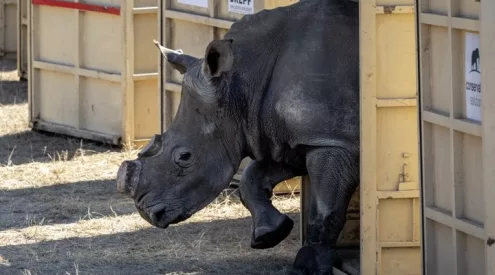An excerpt from my interview with Peter Allison, former safari guide and best-selling author of Don’t run, whatever you do and Don’t look behind you!
My favourite thing is to be in an area where the animals are relaxed enough that they’re ignoring you and carrying on as if you weren’t around. That allows you to watch incredible behaviour and then to try to interpret it. It was a real thrill, a couple of years into my career, when I realised that most of the time I could actually figure out what was going on. I thought ‘Phwaw! I might actually be okay at this job.’
For instance, when you’re watching lions, they might do something that you’re not used to seeing. I love trying to figure out why they’d be behaving differently. One example was a pride we had way down at the south of Mombo, which was where I worked in the Okavango for a long time. There were two lionesses and they had quite young cubs and two of the big males from the area were with them. Somewhere way up in the distance a lion calls, and you could tell it was a male from the number of grunts he gives at the end.
The two big guys put up their heads and had a listen and it was fairly far off and obviously they made the decision: ‘Okay, we don’t need to tell him to bugger off this is our spot’ and put their heads down. The two females watched their boyfriends and they stood up with their hackles absolutely raised – you don’t realise lions have hackles until you’ve seen them raised – and they walked over and they climbed into the males. They were smacking them round the head, biting their ears and so the males started roaring. The females joined in and you had that wonderful sound, four adult lions going ‘Oooooawww’ and the little cubs joined in going ‘Ow ow ow’ – absolutely brilliant.
Then it happened again. The male lion in the distance called once more, and the two big males whose territory it was again just figured ‘No, we’ll let him go’. The females climbed into them again and everybody started roaring and the cubs started going. And watching them I thought, ‘What’s going on here?’ Then I realised, the two big guys are thinking ‘Why pick a fight? He’s far enough away and he doesn’t seem to be coming in this direction.’ But the females’ attitude was, ‘We’ve got babies and you might not be around tomorrow, so you tell him to bugger off right now.’
They knew that if just the females roared, then that guy in the distance knows that they’re females and he would actually come straight towards them. They can’t ward him off – it’s got to come from the guys. And with one lion calling in the distance and two calling back, he’s going to say ‘Yeah well you know, I wasn’t going that way anyway’ and head off in the other direction.
Incidentally, how many extra grunts are there at the end of a male lion’s roar?
Generally you get a dozen or more with a male. You know when they do that ‘Ooooooooawww’ and then at the end they go ‘Oof oof oof’. Females about seven or eight. But none of this is exact. That’s the thing with all these things, you know – if you hear eight grunts at the end it’s a female, but what if it’s nine? It might have something in its throat, be giving a bit of a cough at the end. I’m very wary of being precise. So, seven or eight it’s a female and a male about a dozen.
Read the full interview in the April issue of the magazine.


















